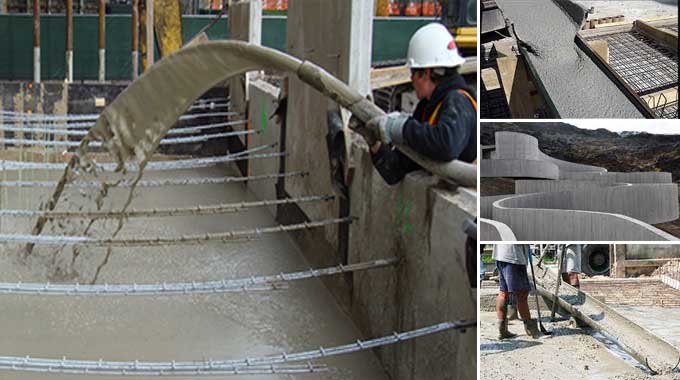
A Description of Fluid Concrete and its Advantages and Disadvantages

The self-leveling concrete floor coating Fluid-Concrete can be used on all types of hard surfaces. It provides beautiful and long-lasting surfaces that are designed specifically for indoor applications.
It is a great alternative to polished concrete and can be combined with ceramic, wood, and under floor heating to create a modern, minimalist design. In contrast to conventional concrete, Fluid-Concrete does not accumulate dirt or disrupt indoor activities, reducing the amount of time it takes to apply and maintain.
Definition of Fluid-Concrete
An indoor cement-based self-leveling floor coating, Fluid-Concrete is 2-3mm thick and can be installed over any hard surface. Fluid-Concrete is particularly suitable for high-traffic environments such as shops, schools, bars, hotels and restaurants. In contrast to traditional construction, it's a modern, tasteful alternative that eliminates dirt and disruption completely.
In addition to its smooth, polished Concrete-like finish, this product is also suitable for under-floor heating and can be used in modern, minimalist designs. Fluid-Concrete can be applied to interior surfaces without joining or breaking. By applying it over existing materials, maintenance and application times are reduced.
Construction Process of Fluid-Concrete
A custom composition of green cement and 95 percent recycled materials is used by Fluid Concrete Technology. Multilayer structural meshing combined with a carefully mixed slurry produces a durable, lightweight concrete that is dimensionally stable and incredibly strong. In order to produce durable, sustainable products, we use a curing process that allows each piece to rest and set in controlled environments.
One of the fluid-concrete?s superpowers is that it gives concrete a high slump without sacrificing strength. Wet concrete containing fluid-concrete is very fluid and hardened concrete is very strong.
Merits of Fluid Concrete
1. The product can be used on a wide range of indoor hard surfaces, such as concrete, mortar, plaster, tile, mosaic, marble, ceramic, and porcelain.
2. Polished concrete has a similar texture and appearance to Fluid-Concrete.
3. Having no expansion joints makes it easy to clean and offers a seamless finish.
4. In high-traffic areas, Fluid-Concrete provides a robust, strong, and durable surface.
5. Compared to conventional flooring like wood, Fluid-Concrete requires little maintenance.
6. The material is highly resistant to ultraviolet rays.
7. Fluid-Concrete has a low thickness and can be walked on immediately after installation.
8. Construction work is not required & it can be applied quickly.
Uses
1. Indoor applications are the only ones suitable for it.
2. Tiles, ceramics, marbles, mosaics, and mosaics can be applied to Fluid-Concrete.
3. For kitchens and bathrooms, as well as other areas of the home, this is a good choice.
4. This permits the renovation of concrete on-site.
5. A high-traffic area such as a shop, restaurant, hotel, or school is ideal for Fluid-Concrete.
Various Color Range
Living Concrete's Fluid-Concrete surfaces are as unique as their customers. It is possible to match almost any project with our range of colors, ensuring you will find what you are looking for. The listed colors are for reference only and are as close as possible to the actual colors. As natural materials, cement, sand, and water may vary in color and tone.
To learn more, watch the following video tutorial.
Video Source: Lafarge
Wrapping it Up
Growing cities and suburbs have resulted in more and more land being paved over. Parking lots, driveways, sidewalks, roads, and side streets now cover fields that were once covered with trees and grass. Nonetheless, as more of our shrinking land area is paved over, a greater amount of rainwater ends up falling on these impervious surfaces instead of soaking into them.


